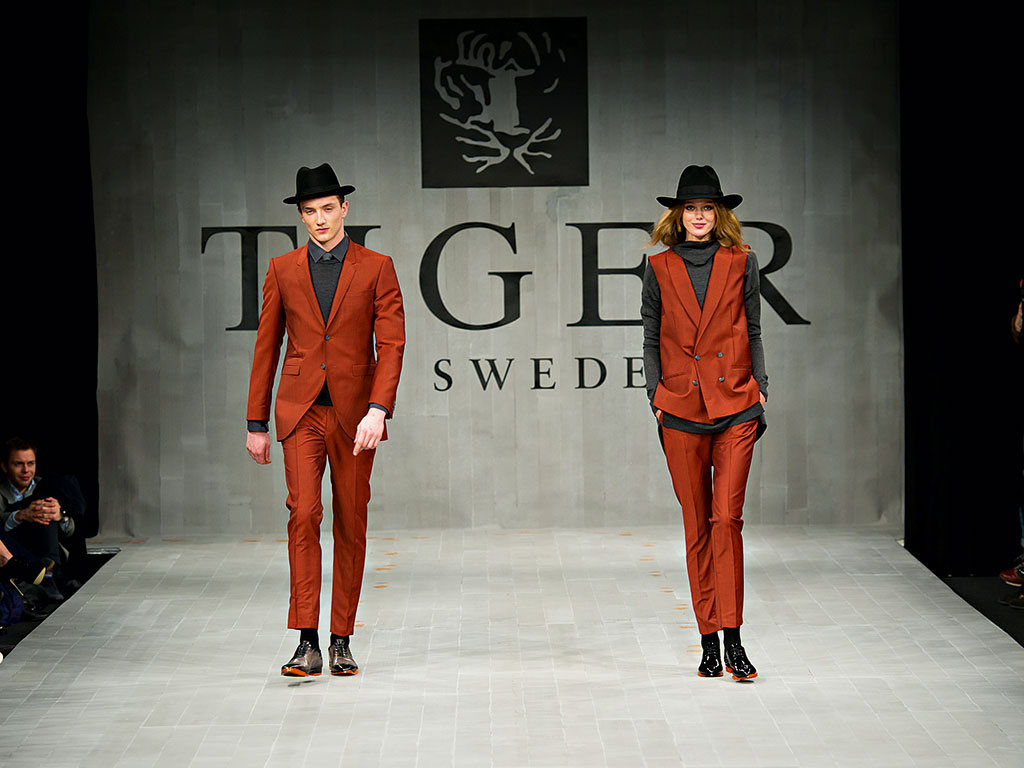Scandinavia has been on everyone’s lips since the likes of The Killing and Borgen entranced viewers. Now, Scandinavian designers are making waves for reasons other than show-related knitwear, as clean lines and cool, business-friendly outfits are drawing in a whole new crowd.
Labels such as Acne, Sand, Tiger of Sweden and Filippa K all offer smart pieces and accessories, which more and more professionals are taking to wear at work. What’s more, over 90 percent of the turnover from Scandinavian fashion is generated by sales abroad.
The explanation for this sudden burst in popularity lies in Scandinavian fashion springing from a modern, minimalist tradition, which caters to everyone with practical and chic clothes. A number of Danes and Swedes prefer versatile clothes that can be worn both at work and at home, ensuring a presentable look in either context.
“Our clothes are not made for a specific demographic, they are supposed to function for those going to work as well as those doing things at home. It basically captures the zeitgeist, by offering quality and affordability through designers who speak to the people,” explains Anne Christine Persson, VP and Development Director of Copenhagen Fashion Week.
Fashion for everyone
In this respect, the Scandinavian style is practical enough for work, yet clean-cut and cool, like the Nordic way of living. It allows both women and men to quickly transition from work life to domestic life, doing groceries or cleaning the house in comfort. The minimalist fashion is a reflection of Scandinavian societies.
However, Nordic minimalism can also be traced back to the design philosophy of the region’s famous modernist designers, such as Poul Henningsen and Børge Mogensen. While they designed furniture, not clothing, the approach was the same – to create beautiful and practical designs that lasted. Henningsen gave himself an extra challenge. He wanted to be a part of a democratisation process that made good design available to everyone, so he designed with mass production in mind.
“We have been famous for our furniture for years. In this respect, it also goes for our fashion that the functional, minimalist image is appealing to a lot of people,” says Persson.
According to Mads Nørgaard, one of Denmark’s leading menswear designers, “Danish designers like to make ‘democratic clothes’ – that is, clothes that could be worn by anyone from a construction worker to a marketing director.” As such, most Scandinavian designers also prefer to keep their prices mid-range.

The Scandinavian fashion industry prides itself on offering ‘affordable luxury’ – essentially providing heritage, wearability, quality and durability at a fair price. “This is essentially also why Scandinavian design is so popular – because it appeals to everyone and is for everyone – pricewise,” explains Persson.
“Scandinavian design is functional, minimalist, but most importantly, it is democratic and inclusive. You get a lot of bang for your buck – great tailoring and luxury for an affordable price,” Persson told Business Destinations.
Another key staple of Nordic fashion is the colour scheme. Scandinavian locals like black, and preferably a lot of it. Attire from Nordic brands is often in shades of black, grey or brown, with few endeavours into colours and print. In this respect, it is understated simplicity, stylish cuts and high quality of clothing that make Scandinavian design stand out.
What’s more, Nordic design is currently enjoying a lot of good press. The general likability associated with Scandinavians and their happy, sustainable societies is being rubbing off on fashion, with people wanting to wear and be associated with this ethos.
“There is a level of likability about our fashion. Our designers are often sustainable and make products of a high quality, in addition to the Nordics getting a lot of attention right now, which means people want to be connected to our brands,” explains Persson.
Positive image
Generally, Scandinavian designers are not known for in-your-face design or loud publicity, which encourages shoppers to go and find out about a product rather than buy into an established brand. Unlike designers with well-known logos, expensive ad campaigns and sponsorship deals, Nordic brands retain a sense of exclusivity (despite being universally accessible).
“Our brands have an appealing image. If you compare Nordic design to French fashion, it’s typically very high-fashion and complicated, while UK fashion is more street and quirky, Italian design tends to be a bit over-the-top and US fashion has a sporty edge. Nordic fashion manages to encompass it all, without being too much of anything – making our brands very understated and clean-cut,” says Persson.
When it comes to high-street brands, H&M offshoots like Cos and & Other Stories offer minimalism, edginess and clean lines for an everyone-can-join price. Designers such as Acne, Bruuns Bazaar, Filippa K and Tiger of Sweden are all known for their sharp tailoring, innovative design and all offer suits with an urban edge.
And shoppers won’t need to travel to Scandinavia to enjoy the fashion. Most of the bigger brands are sold at retailers across the globe and some designers even show their collections at London Fashion Week. What’s more, with online shopping gaining traction, most of these designs are but a click away.





